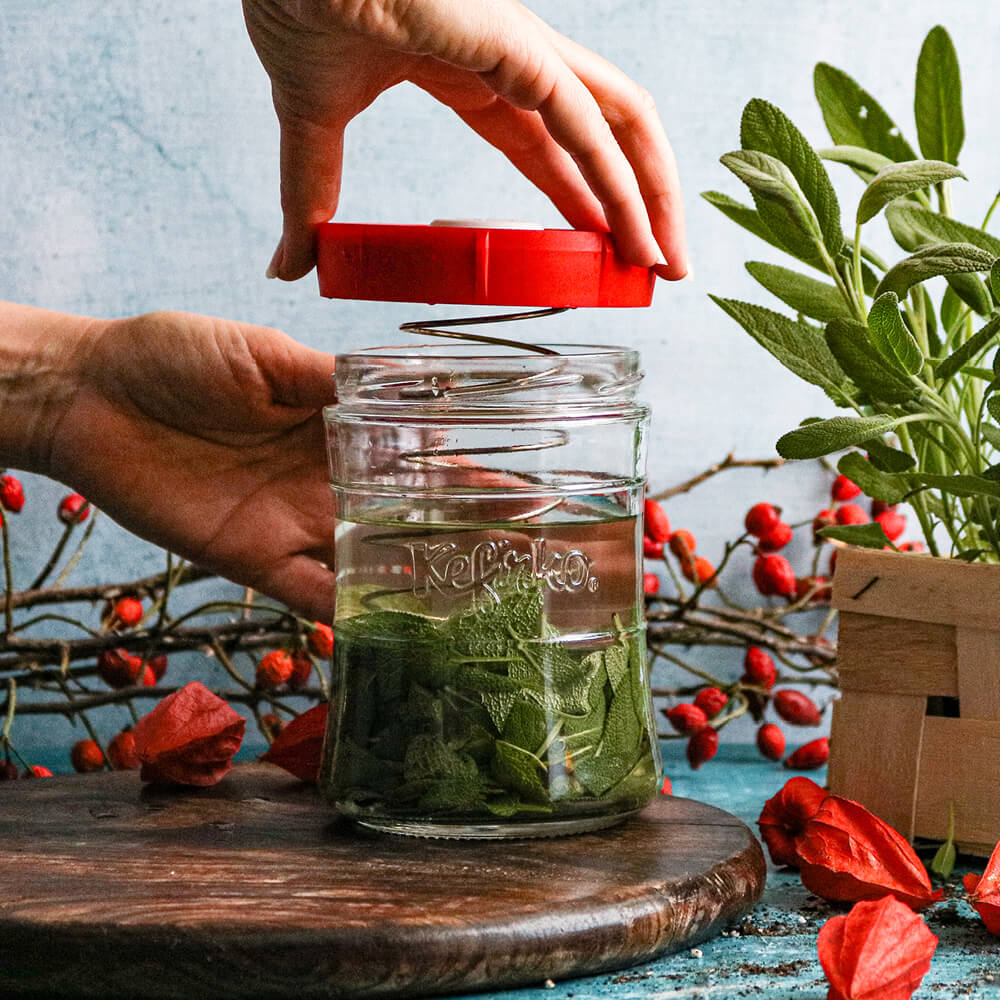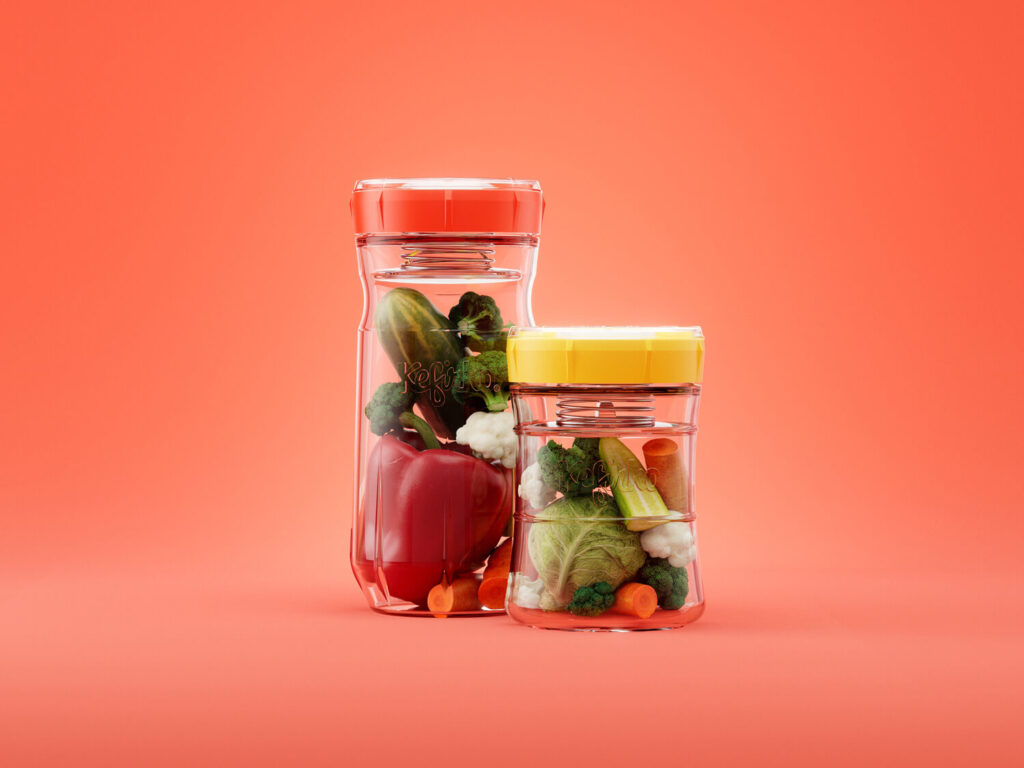FERMENTING VEGETABLES AND FRUITS

See answers to FAQs about fermenting vegetables and fruits below.
Fermenting vegetables is a traditional method of preserving fresh ingredients when they are available. All you need to do is use quality non-metal equipment and salt and/or brine.
There are some basic principles that you need to follow in this process, making sure there is no air and keeping the hygiene at a high level. There are many different recipes for fermenting vegetables. The Veggie Fermenter includes more than 25 delicious recipes for beginners or experienced fermentationist.
How to ferment with Veggie Fermenter
You can ferment almost all vegetables and even some fruits – apples, berries. Cabbage is one of the most popular vegetables to ferment and next in line are radishes. You can ferment garlic, cucumbers, carrots, celery, green beans and even herbs. There are some limitations with green leafy vegetables because of their distinctive taste that becomes even stronger with fermentation. With a little bit of experience you can ferment almost everything.
Veggie Fermenter
Depending on the recipe you’re making. The intention of chopping or grating vegetables is to enable them to release water and create enough brine to keep them submerged in it. But some vegetables can’t be grated and can only be chopped in larger chunky pieces or left whole. In that case you can use a salty brine instead.
Salt is important to create the environment where Lactobacillus bacteria will thrive, while yeast and molds will not be able to form and this will protect your ferment.
The percentage of salt is calculated for the total weight of your ingredients and water. It is recommended to use about 2% brine. So, for 1kg of ingredients this means about 20g salt. But keep in mind that fermentation is faster when the temperature is higher. So, in warmer seasons you may add more salt to slow down the fermentation.
Many bacteria and yeasts in your ferment are doing their job which produces gas. If you are new to this it may come as a shock but it does not mean the ferment has gone bad. The Veggie Fermenter has an active carbon filter that reduces the smell of the gases coming from the jar.
Mold is the most common problem when fermenting vegetables. This is usually because the ferment was in contact with air. Some people just remove the layer with mold, but to be on the safe side it’s best to discard the whole jar in this case. You can prevent mold growth by keeping the ferment submerged at all times.
Most vegetables change color slightly due to fermentation. Color usually fades. If they are very dark before fermenting they may color the other vegetables in the jar. For instance the beet root or purple cabbage may color the whole jar in pink. If you notice pink color even if there are no vegetables of this color in the jar that may be a contamination and you need to discard the whole jar. Dark layers of vegetables in the jar usually mean that the vegetables were not covered in brine and came in contact with air.
Once fermentation is finished you can store the vegetables or fruits in the fridge. Freezing is acceptable too but low temperatures may kill some of the beneficial microorganisms. It’s best to store them in glass jars with a lid and to make sure they are covered in brine all the time. Plastic containers are not recommended as much because the ferments are usually acidic which may affect the plastic.
Vegetables and fruits contain all the necessary microorganisms for the fermentation. When you’re not sure about this or want to make it faster and more consistent, you can use some help in the shape of starter cultures. This is usually a powdered culture that you mix in the brine. You can get help with whey that is also full of microorganisms, some people like to use sauerkraut juice from the previous batch for the new fermentation. Some even use the extra kefir grains and add them in a mix. All these options are available, but don’t be afraid of the wild fermentation that happens naturally, with great ingredients and a little bit of salt.
It’s important to ensure that the fermented food is safe to eat before consuming it.
Here are some tips:
- Check for signs of spoilage: If you notice any off smells or flavors, mold, or signs of spoilage such as discoloration or sliminess, discard the ferment immediately.
- Look for bubbles: During fermentation, carbon dioxide is produced, which creates bubbles in the ferment. If you don’t see any bubbles, it may indicate that the fermentation process has not occurred or that it’s incomplete.
- Check the pH: Fermented foods should have a pH level of 4.6 or lower to prevent the growth of harmful bacteria. You can use a pH meter or pH test strips to check the acidity of your ferment.
- Taste a small amount: If you’re unsure about the safety of your ferment, taste a small amount to see if it has a pleasant flavor.
- Use proper fermentation techniques: To ensure that your ferment is safe to eat, follow proper fermentation techniques such as using clean equipment, using the right amount of salt or starter culture, and fermenting at the correct temperature and time.
FERMENTING VEGETABLES & FRUITS
Ferment mixed veggies, kimchi, sauerkraut, fruits or any other vegetable in your kitchen!



